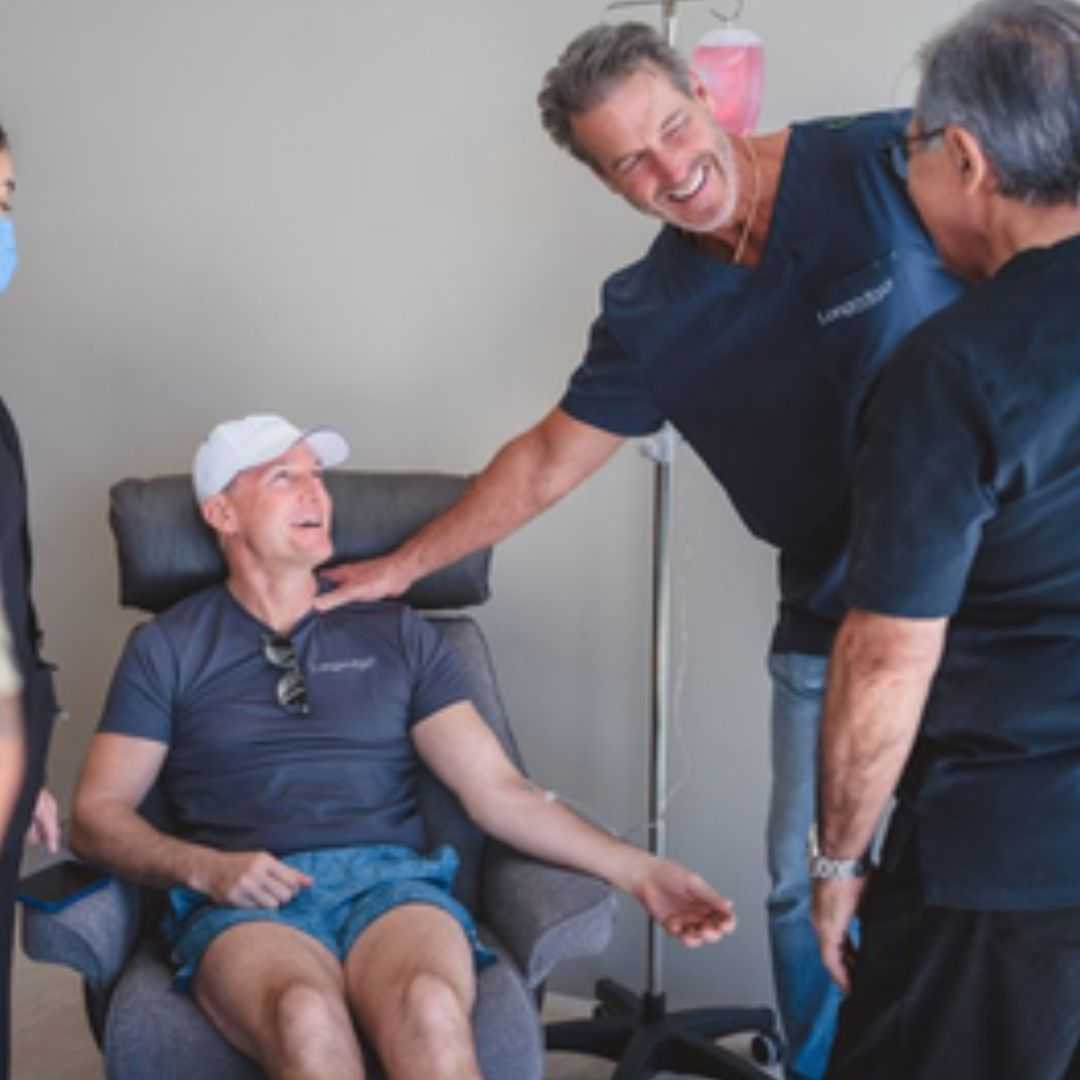
Finding Relief from Tonsillitis: Your Guide to Treatment Options Worldwide
Dealing with a persistent sore throat, difficulty swallowing, or recurring fevers can be debilitating, often pointing to a common condition known as tonsillitis. This inflammation of the tonsils, the two oval-shaped pads of tissue at the back of your throat, affects millions globally, from young children to adults. While often managed with home remedies and medication, chronic or severe tonsillitis can significantly impact quality of life, leading many to seek more definitive treatments, including surgical removal of the tonsils (tonsillectomy).
If you're grappling with the discomfort and disruption that tonsillitis brings, you're not alone. Many patients are now exploring international healthcare options, or "medical tourism," to find effective, high-quality, and often more affordable solutions for their tonsillitis treatment. This comprehensive guide will walk you through everything you need to know about tonsillitis – its symptoms, causes, available treatments, recovery, and how you can access world-class care through medical travel.
Whether you're wondering, "what causes tonsillitis?" or "how much does tonsil removal cost?", we'll provide clear answers, helping you make informed decisions about your health journey. Let's explore how you can find lasting relief and regain your well-being, wherever you choose to seek care.
What are the common symptoms of tonsillitis?
Recognizing the signs of tonsillitis is the first step toward getting appropriate care. While a sore throat is a hallmark symptom, tonsillitis often presents with a range of discomforts that can make daily life challenging. Here’s what to look out for:
- Severe Sore Throat: This is often the most prominent symptom, making it painful to talk and swallow.
- Difficulty/Painful Swallowing (Dysphagia): Eating and drinking can become very uncomfortable, sometimes leading to reduced appetite.
- Red, Swollen Tonsils: Your tonsils may appear noticeably larger than usual, bright red, and sometimes have white spots, streaks of pus, or a yellowish coating.
- Fever: A high temperature is common, indicating the body's fight against infection.
- Bad Breath (Halitosis): The presence of bacteria and inflammation can cause an unpleasant odor from the mouth.
- Headache: A general feeling of malaise often accompanies the infection.
- Stiff Neck: In some cases, the inflammation can cause neck stiffness or tenderness.
- Hoarse Voice: The swelling in the throat area can affect vocal cords.
- Stomach Ache (especially in children): Younger patients might also experience abdominal pain and vomiting.
If you experience several of these "tonsillitis symptoms," especially if they are severe or recurring, it's crucial to consult a healthcare professional. Understanding if your "sore throat tonsils" are due to tonsillitis can guide the right treatment path.
What causes tonsillitis and who is at risk?
Understanding "what causes tonsillitis" is key to prevention and treatment. The condition primarily results from infections, which can be either viral or bacterial:
- Viral Infections: The most common cause (50-80% of cases). Viruses like those causing the common cold, influenza, adenovirus, and Epstein-Barr virus (mononucleosis) can all lead to tonsillitis.
- Bacterial Infections: The most common bacterial culprit is Streptococcus pyogenes, which causes strep throat. If left untreated, bacterial tonsillitis can sometimes lead to more serious complications like rheumatic fever.
Certain factors increase an individual's "risk factors for tonsillitis":
- Young Age: Tonsillitis is most common in children between preschool age and mid-teenagers. Their immune systems are still developing, making them more susceptible to infections.
- Frequent Exposure to Germs: School-aged children are particularly at risk because they are in close contact with peers, facilitating the spread of viruses and bacteria.
- Weakened Immune System: Individuals with compromised immune systems may also be more prone to infections.
Knowing if your tonsillitis is "bacterial or viral" helps determine the appropriate "tonsillitis treatment," as antibiotics are only effective against bacterial infections.
What types of tonsillitis treatments are available?
The "tonsillitis treatment options" depend on the cause and severity of the condition. Most cases of tonsillitis, especially those caused by viruses, can be managed with conservative home care:
- Rest and Fluids: Getting plenty of rest and staying hydrated are crucial for recovery.
- Pain Relievers: Over-the-counter medications like ibuprofen or acetaminophen can help manage pain and fever.
- Saltwater Gargle: Gargling with warm salt water can soothe a sore throat.
- Throat Lozenges/Sprays: These can provide temporary relief from throat discomfort.
For bacterial tonsillitis (strep throat), antibiotics are prescribed to clear the infection and prevent complications. It's essential to complete the full course of antibiotics, even if symptoms improve quickly.
When conservative treatments aren't enough, or for patients with chronic or recurrent tonsillitis, surgical intervention may be considered. A "tonsillectomy" is the surgical removal of the tonsils, and it remains a highly effective treatment for persistent problems.
Am I eligible for a tonsillectomy? Who needs this procedure?
Deciding "when is tonsillectomy necessary" is a discussion you’ll have with an Ear, Nose, and Throat (ENT) specialist. The "criteria for tonsil removal" generally focus on the frequency and severity of infections, or other significant health issues caused by the tonsils. You might be considered a candidate if you experience:
- Recurrent Tonsillitis: This is the most common reason. Guidelines often suggest tonsillectomy for:
- 7 or more episodes in the past year, OR
- 5 or more episodes per year in the past two years, OR
- 3 or more episodes per year in the past three years.
- Chronic Tonsillitis: Persistent infection that doesn't clear up with antibiotics.
- Tonsillar Abscess (Peritonsillar Abscess): A collection of pus behind the tonsil that doesn't respond to drainage or antibiotics.
- Obstructive Sleep Apnea: Enlarged tonsils can block the airway during sleep, leading to snoring and breathing pauses.
- Significant Dysphagia: Severely enlarged tonsils making it very difficult to swallow.
- Tonsil Stones (Tonsilloliths): Persistent and bothersome bad breath or discomfort due to calcified material in the tonsil crypts.
If you're wondering, "do I need my tonsils removed?", a consultation with an ENT specialist is essential to assess your specific situation and determine if the benefits of surgery outweigh the risks.
What is the recovery time and what can I expect after tonsillectomy?
Understanding "tonsillectomy recovery" is crucial for managing expectations and ensuring a smooth healing process. While generally safe, it's a painful recovery, especially for adults. "How long does it take to recover from tonsillectomy?" typically ranges from 1 to 2 weeks.
Here’s what you can expect during the "post-tonsillectomy pain" phase:
- Pain Management: You will experience moderate to severe throat pain, which can radiate to the ears. Your doctor will prescribe pain medication, which should be taken as directed to keep pain levels manageable. Staying ahead of the pain is vital for being able to swallow and stay hydrated.
- Hydration: Drinking plenty of fluids is paramount to prevent dehydration, which can worsen pain and delay healing. Sips of water, clear broth, or electrolyte drinks are recommended.
- Diet: Start with soft, bland foods like popsicles, ice cream, mashed potatoes, and scrambled eggs. Gradually introduce more solid foods as pain subsides. Avoid anything acidic, spicy, crunchy, or hot that could irritate the throat.
- Rest: Plan for plenty of rest. Avoid strenuous activities, heavy lifting, and intense exercise for at least two weeks.
- Bleeding: Slight spotting or streaks of blood in saliva are normal. However, any bright red blood or significant bleeding requires immediate medical attention. This is a primary concern for "bleeding after tonsillectomy."
- Bad Breath/White Patches: It's common for a white or yellowish membrane to form over the surgical sites – this is normal healing tissue, not infection. Bad breath is also common due to the healing process.
Follow your surgeon’s specific instructions carefully to ensure the best possible outcome.
What are the risks and side effects of tonsillectomy?
Like any surgical procedure, there are potential "tonsillectomy risks" and side effects, though serious "complications of tonsil removal" are rare. It's important to be aware of them:
- Bleeding: This is the most common and serious potential complication. It can occur during surgery, immediately after (within 24 hours), or 5-10 days post-op as scabs fall off. Seek immediate medical attention for any significant bright red bleeding.
- Infection: Though less common, infection can occur at the surgical site. Signs include worsening pain, fever, and pus.
- Pain: Expected post-operative pain can be severe and prolonged, affecting eating and drinking.
- Anesthesia Risks: As with any surgery requiring general anesthesia, there's a small risk of adverse reactions, including nausea, vomiting, muscle aches, or more serious respiratory issues.
- Difficulty Swallowing/Dehydration: Due to pain, patients may struggle to swallow, leading to dehydration.
- Voice Changes: Very rarely, there can be temporary or permanent changes to voice quality, especially in professional singers.
- Damage to Structures: Extremely rare, but damage to the soft palate, teeth, or other throat structures can occur.
Your surgeon will discuss these risks with you in detail, ensuring you are fully informed before proceeding with the surgery.
How much does tonsillitis treatment cost worldwide? (Cost Comparison)
One of the driving factors for "medical tourism tonsillectomy" is the significant difference in "cost of tonsillectomy" across countries. While simple tonsillitis treatment with antibiotics might be relatively affordable, surgical tonsil removal represents a more substantial investment. Here’s a general cost comparison for tonsillectomy (excluding travel/accommodation, but often including surgeon fees, anesthesia, and a short hospital stay) in different regions:
Tonsillectomy Cost Comparison Table (Estimates in USD)
| Region/Country | Estimated Cost Range | Key Factors Influencing Cost |
|---|---|---|
| USA / Canada | $4,000 - $8,000+ | High facility fees, surgeon fees, insurance coverage variability. |
| Western Europe (UK, Germany, France) | $3,000 - $7,000 | Public healthcare systems often cover costs, but private care or international patients pay significant fees. |
| Mexico / Costa Rica | $1,500 - $3,000 | Lower labor and overhead costs, proximity for North Americans. |
| India / Thailand | $1,000 - $2,500 | Very competitive pricing, highly skilled doctors, world-class facilities. |
| Turkey / Poland | $1,200 - $2,800 | Excellent quality, modern facilities, growing medical tourism hubs. |
These figures are estimates and can vary based on the specific clinic, surgeon's experience, type of anesthesia, hospital stay duration, and pre/post-operative care included. Always get a detailed quote before committing.
Why consider tonsillitis treatment abroad for medical tourism?
The decision to seek "tonsil removal abroad" is often driven by compelling advantages, especially for individuals in countries with high healthcare costs or long waiting lists. Here’s why many patients choose "medical travel for ENT" procedures:
- Significant Cost Savings: As seen in the table above, the "affordable tonsillectomy" overseas can be a fraction of the price compared to Western countries, often saving thousands of dollars.
- Access to High-Quality Care: Many medical tourism destinations boast internationally accredited hospitals and highly skilled surgeons, often trained in Western countries, offering world-class care.
- Shorter Wait Times: In some public healthcare systems, non-emergency procedures like tonsillectomy can involve long waits. Traveling abroad can provide immediate access to necessary treatment.
- Privacy and Anonymity: Some patients prefer the discretion that comes with receiving medical treatment away from their home country.
- Combination of Treatment and Travel: For many, medical tourism offers the unique opportunity to recover in a pleasant environment, combining their medical journey with a cultural experience or vacation.
Which countries offer the best value for tonsillectomy and tonsillitis treatment?
When searching for the "best countries for tonsillectomy," several destinations consistently emerge as top choices for medical tourists seeking quality and affordability:
- Mexico: Popular for North Americans due to its proximity and well-developed medical infrastructure in cities like Tijuana, Cancun, and Guadalajara. "Tonsil surgery in Mexico" is known for being affordable and accessible.
- Costa Rica: Offers a combination of excellent medical care and a beautiful, peaceful environment for recovery. Known for its JCI-accredited facilities and U.S.-trained physicians.
- India: A powerhouse in medical tourism, India provides highly affordable treatments without compromising on quality. Many hospitals are JCI or NABH accredited, with experienced surgeons.
- Thailand: Renowned for its luxurious hospitals, English-speaking staff, and excellent patient care, often at a significantly lower cost than Western countries.
- Turkey: An emerging leader, Turkey offers state-of-the-art hospitals, advanced technology, and competitive pricing, particularly in Istanbul and Ankara.
- Poland: Within Europe, Poland provides high-quality care at a fraction of the cost found in Western European nations, making it attractive for European patients.
These countries often have a strong focus on international patients, offering services like language assistance, travel coordination, and comprehensive packages.
What should I expect when traveling for tonsillitis treatment abroad?
Embarking on a "medical travel planning" journey requires careful preparation. Here’s a general outline of what to expect:
- Research and Selection: Start by researching potential destinations and clinics. This is where medical tourism facilitators like PlacidWay can be invaluable, helping you "how to choose a clinic abroad" by providing vetted options, comparing prices, and facilitating communication.
- Initial Consultation: You'll likely have a remote consultation (via video call) with the chosen ENT specialist to discuss your condition, review medical records, and confirm eligibility.
- Travel Arrangements: Once a treatment plan is confirmed, you'll arrange flights, accommodation, and any necessary visas. Many clinics or facilitators offer assistance with these logistics.
- Arrival and Pre-operative Appointments: Upon arrival, you'll typically have an in-person consultation, physical examination, and any required pre-operative tests.
- The Procedure: The tonsillectomy itself is usually an outpatient procedure, meaning you go home the same day, or requires a short overnight stay, depending on the hospital's policy and your recovery.
- Post-operative Recovery: You'll need to stay in the destination country for a recommended period (often 7-14 days for tonsillectomy) to allow for initial healing and follow-up checks.
- Follow-up and Return Home: After your final check-up and clearance from the surgeon, you can return home. Ensure you have clear instructions for post-operative care and how to manage any issues once back.
A good "patient journey medical tourism" experience relies heavily on thorough planning and clear communication at every stage.
How can I ensure safety and quality when getting tonsillitis treatment abroad?
Ensuring "safe medical tourism" and "quality healthcare abroad" is paramount. Here are key steps to mitigate risks:
- Accreditation: Look for hospitals with international accreditations such as Joint Commission International (JCI). This signifies adherence to high standards of patient safety and quality of care. Also, check for local accreditations.
- Surgeon Credentials: Verify the surgeon's qualifications, experience, and board certifications. Inquire about their specific experience with tonsillectomy procedures.
- Facility Standards: Research the clinic's facilities, technology, and hygiene practices. Ask for virtual tours or photos if possible.
- Patient Reviews and Testimonials: Read reviews from previous international patients. Websites like PlacidWay often feature verified patient feedback and "tonsillectomy abroad reviews."
- Clear Communication: Ensure there's a clear communication channel with the clinic, preferably with English-speaking staff or a reliable interpreter. Clarify all aspects of the treatment plan, risks, and post-operative care.
- All-Inclusive Pricing: Get a detailed breakdown of all costs to avoid hidden fees. Understand what is included (e.g., hospital stay, surgeon's fees, anesthesia, medications, follow-up).
- Medical Tourism Facilitator: Working with a reputable facilitator like PlacidWay can significantly enhance safety and quality, as they vet clinics and surgeons and provide support throughout your journey.
"Checking clinic accreditation" and due diligence are your best tools for a successful outcome.
What are some patient success stories for tonsillitis treatment abroad?
While individual outcomes vary, countless patients have found immense relief and improved quality of life through "medical tourism success stories ENT" procedures abroad. These stories often share common themes:
- Freedom from Recurrent Infections: Many patients who suffered from monthly or quarterly bouts of tonsillitis report a complete cessation of infections post-tonsillectomy, allowing them to live without constant fear of a sore throat and fever.
- Improved Sleep and Breathing: Individuals with enlarged tonsils causing snoring or sleep apnea often experience dramatic improvements in sleep quality and daytime energy after surgery. Parents frequently share how their children's restless nights turn into peaceful sleep.
- Enhanced Quality of Life: Beyond physical relief, patients often describe a renewed sense of well-being. They can enjoy food, social activities, and work without the debilitating pain and fatigue that chronic tonsillitis brought.
- Positive Travel Experience: Many patients also share how the medical travel itself was a smooth and positive experience. From the warmth of the medical staff in countries like Thailand or Mexico to the opportunity to recover in a serene environment, the journey contributes to their overall satisfaction. For example, a patient from the US struggling with insurance complexities might find relief not just from their tonsillitis but also from financial stress by opting for a highly rated clinic in Costa Rica, receiving excellent care and enjoying a peaceful recovery by the beach.
These narratives underscore the profound impact that accessible and high-quality tonsillitis treatment abroad can have on a patient's health and happiness.
Take the Next Step with PlacidWay
Ready to explore treatment options abroad? Discover top clinics, compare prices, and get a free quote tailored to your needs with PlacidWay.



-Package-in-Bangkok-Thailand-at-LRC-Fertility-Center.jpg)






Share this listing